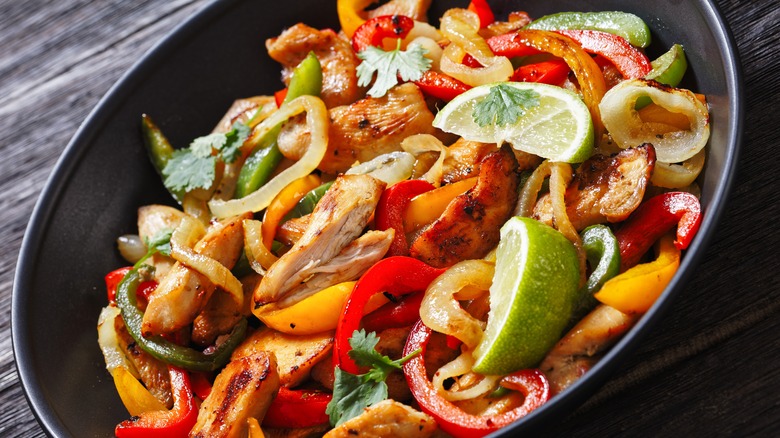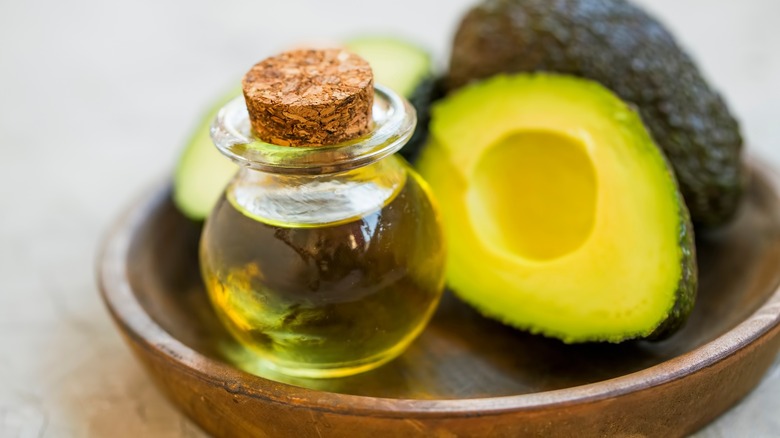Why Avocado Oil Is The Absolute Best Choice For Cooking Fajita Veggies
True to their reputation, fajitas offer plenty of sizzle. It turns out that the culprit of all the chaos is most likely a sauce or liquid squirted on the food right before it's served. But we often associate the sizzle with the initial oil in the pan, and there's a good reason why. Since fajita veggies are typically cooked at medium-high heat, you're likely to hear some crackling oil throughout the entire process, even if it's less dramatic than the smoky finish.
Because you're using higher temperatures here, selecting the right type of cooking fat is key. The smoke point of avocado oil climbs up to a whopping 500 degrees Fahrenheit, which is why it's the best choice for fajita veggies. This means that your oil can be cooked at high heat without the risk of it smoking, so you'll avoid a burnt flavor in your food and potentially detrimental health conditions (such as the release of free radicals) in your kitchen. But luckily, this avocado-based product is also the best pick flavor-wise, as it blends in perfectly with fajita seasonings and toppings like salsa, guacamole, sour cream, lime wedges, and avocado slices.
Cook your fajita veggies to your desired texture
You generally only need a tablespoon or two of avocado oil here, and you'll want to slice your produce nice and thin so it cooks quickly. If you turn your stove to medium-high heat, sliced bell peppers and onions should be done in anywhere from five to 15 minutes. If you like your veggies on the firmer side, stick to the former, but if you want them nice and soft, go with the latter (or keep cooking until you're satisfied). Season your skillet simply with salt and pepper, or choose options like cumin, chili powder, garlic powder, onion powder, oregano, paprika, and a squeeze of lime juice. Keep in mind, however, that throwing different types of veggies into the mix — like the shrooms in our portobello fajitas — may alter your cooking times.
When adding a protein (we like spicy chicken or steak) into your recipe, you can use avocado oil to fry it up as well once you transfer your cooked vegetables to a plate. If you're using your veggies for something other than classic fajitas, however, feel free to incorporate another type of oil for any steps that don't require high heat. In the case of our fajita pasta complete with a cilantro lime sauce, you'll make a dressing with olive oil. But in general, an avocado-based product will create the best results in your kitchen and on your plate.

